How Abraham Lincoln Invented Facebook (a hoax) —
On Wednesday, Nate St. Pierre
posted an interesting story on his blog. He detailed his discovery of an attempt by Abraham Lincoln in 1845 to create and patent a social-networking system that very much resembled Facebook. Only it was an all-paper version of Facebook, and Lincoln didn't call it Facebook. In his patent application he supposedly called it "The Gazette," and he described it as a system to "keep People aware of Others in the Town."
He laid out a plan where every town would have its own Gazette, named after the town itself. He listed the Springfield Gazette as his Visual Appendix, an example of the system he was talking about. Lincoln was proposing that each town build a centrally located collection of documents where "every Man may have his own page, where he might discuss his Family, his Work, and his Various Endeavors."
Lincoln created a sample Gazette page (below) for himself, to show the patent office what he was talking about. St. Pierre commented how much it resembled a Facebook status page because it included a picture of Lincoln in the top left, and then had columns in which Lincoln discussed various details of his life. For instance, in one column Lincoln described his great enjoyment at visiting P.T. Barnum's circus.
And this is where St. Pierre's story falls apart, historically speaking. Because Barnum didn't own a circus in 1845. (He had his New York museum, at which he was perpetrating hoaxes such as the
Feejee Mermaid exhibition.) Nor did the technology exist in 1845 to include a photograph on a newspaper page. Daguerre had only announced his invention of photography in 1839, and there was no way to make multiple copies of daguerrotypes, short of taking a photograph of the photograph, which meant the quality degraded with each reproduction.
The reality is that no part of St. Pierre's story is true. Lincoln never submitted a patent for a 19th-century version of Facebook. The story is pure historical fantasy. Though that hasn't stopped over 16,000 people from sharing the story on Facebook. (And one suspects a good percentage of those people might have thought the story was true.)
For those interested in real history, the nineteenth century did produce some social-networking innovations that definitely were the distant predecessors of Facebook. The penny press, introduced in
1835 1832, was the most important of these. As the name implies, the penny press was simply the idea of selling newspapers at the cut-rate price of a penny each. This made papers cheap enough to become a mass-market commodity, hugely increasing their readership. Like Facebook, the penny papers were full of local gossip and news. They pioneered the concept of "personal ads" placed by individuals. They relied heavily on advertising for their income. And the owners of the most successful penny papers became filthy rich. I go into quite a bit of detail about the penny papers in my article on the
Great Moon Hoax of 1835.



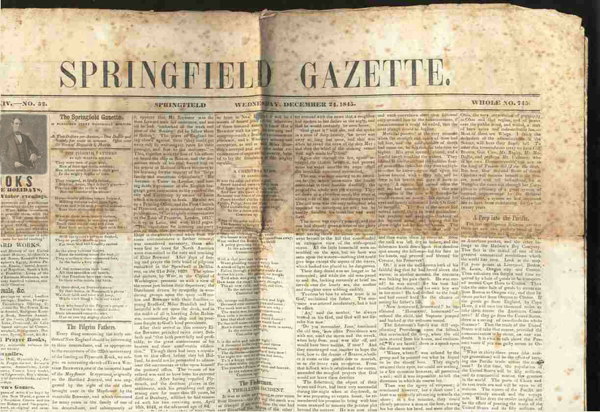
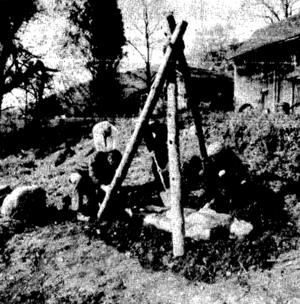
 Every few years I post an update about the Vinland Map (a map, supposedly from the early 15th century, showing part of North America). In 2002 I posted that an analysis of the map's ink proved it was a fake, but in 2003 I wrote that a new study indicated it might be genuine. And in 2004 I linked to a Scientific American article that described historian Kirsten Seaver's theory that the map was created in the 1930s by a German Jesuit priest, Father Josef Fischer, in order to tease the Nazis by "playing on their claims of early Norse dominion of the Americas and on their loathing of Roman Catholic Church authority."
Every few years I post an update about the Vinland Map (a map, supposedly from the early 15th century, showing part of North America). In 2002 I posted that an analysis of the map's ink proved it was a fake, but in 2003 I wrote that a new study indicated it might be genuine. And in 2004 I linked to a Scientific American article that described historian Kirsten Seaver's theory that the map was created in the 1930s by a German Jesuit priest, Father Josef Fischer, in order to tease the Nazis by "playing on their claims of early Norse dominion of the Americas and on their loathing of Roman Catholic Church authority."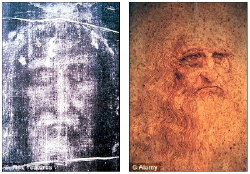 A new theory about the Shroud of Turin: Lillian Schwartz, a graphic consultant at the School of Visual Arts in New York, thinks Leonardo da Vinci created it. Her reasoning is that "the face on the Turin Shroud and a self portrait of Leonardo da Vinci share the same dimensions."
A new theory about the Shroud of Turin: Lillian Schwartz, a graphic consultant at the School of Visual Arts in New York, thinks Leonardo da Vinci created it. Her reasoning is that "the face on the Turin Shroud and a self portrait of Leonardo da Vinci share the same dimensions." Swiss art historian Henri Stierlin argues that the famous bust of Queen Nefertiti on display in Berlin's Pergamon museum is a fake. He says that it was created around 1912 as a way for an archaeologist to color test ancient pigments found at the digs, but when a German prince mistook it for an ancient work of art, the archaeologist didn't have the courage to correct his important guest. And so the statue came to be regarded as an ancient work of art. [Agence France Presse]
Swiss art historian Henri Stierlin argues that the famous bust of Queen Nefertiti on display in Berlin's Pergamon museum is a fake. He says that it was created around 1912 as a way for an archaeologist to color test ancient pigments found at the digs, but when a German prince mistook it for an ancient work of art, the archaeologist didn't have the courage to correct his important guest. And so the statue came to be regarded as an ancient work of art. [Agence France Presse]
 A carving on the ancient Ta Prohm temple in Cambodia has become a favorite of creationists, because it looks kinda like a stegosaurus. And, of course, if there's a carving of a stegosaurus on an ancient temple, that supports their belief that dinosaurs and humans once lived together.
A carving on the ancient Ta Prohm temple in Cambodia has become a favorite of creationists, because it looks kinda like a stegosaurus. And, of course, if there's a carving of a stegosaurus on an ancient temple, that supports their belief that dinosaurs and humans once lived together.
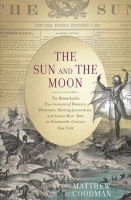 My doctoral dissertation was partially on the subject of the Great Moon Hoax of 1835. I never finished writing the dissertation, but I did spend a LOT of time researching the moon hoax, and I always thought that it would make a great subject for a general-interest book -- using the moon hoax as a window on New York City and America in 1835.
My doctoral dissertation was partially on the subject of the Great Moon Hoax of 1835. I never finished writing the dissertation, but I did spend a LOT of time researching the moon hoax, and I always thought that it would make a great subject for a general-interest book -- using the moon hoax as a window on New York City and America in 1835.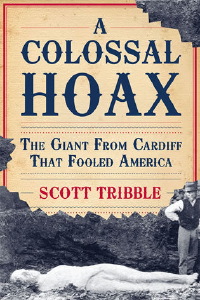 It's probably not going to be received by the book-buying public with as much enthusiasm as the latest John Grisham thriller, but this is the kind of book that gets me excited. It's a new (and what looks to be very well researched) history of the Cardiff Giant hoax titled A Colossal Hoax: The Giant From Cardiff That Fooled America by Scott Tribble. It's due out at the end of November. A bit pricey, but that's often the case with non-mass-market books. From its blurb:
It's probably not going to be received by the book-buying public with as much enthusiasm as the latest John Grisham thriller, but this is the kind of book that gets me excited. It's a new (and what looks to be very well researched) history of the Cardiff Giant hoax titled A Colossal Hoax: The Giant From Cardiff That Fooled America by Scott Tribble. It's due out at the end of November. A bit pricey, but that's often the case with non-mass-market books. From its blurb: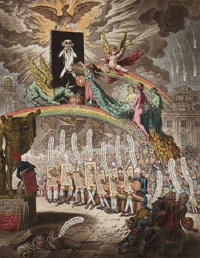 The Yale Center for British Art is hosting an exhibition about an obscure 18th-century art hoax (one that I had never heard of before). The exhibition is titled "Benjamin West and the Venetian Secret" -- which makes it sound a bit like a new Harry Potter novel. From Art Knowledge News:
The Yale Center for British Art is hosting an exhibition about an obscure 18th-century art hoax (one that I had never heard of before). The exhibition is titled "Benjamin West and the Venetian Secret" -- which makes it sound a bit like a new Harry Potter novel. From Art Knowledge News: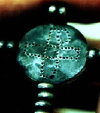 Researchers have determined that the Chi-Rho Amulet, found in Shepton Mallet in 1990, is a fake. When it was first discovered in a Roman grave eighteen years ago, it was thought to be the earliest Christian artifact ever found in Britain. Local residents were so excited by the discovery that they named an entertainment center and a street after it. But tests indicate that the silver in the amulet is of nineteenth-century origin.
Researchers have determined that the Chi-Rho Amulet, found in Shepton Mallet in 1990, is a fake. When it was first discovered in a Roman grave eighteen years ago, it was thought to be the earliest Christian artifact ever found in Britain. Local residents were so excited by the discovery that they named an entertainment center and a street after it. But tests indicate that the silver in the amulet is of nineteenth-century origin.